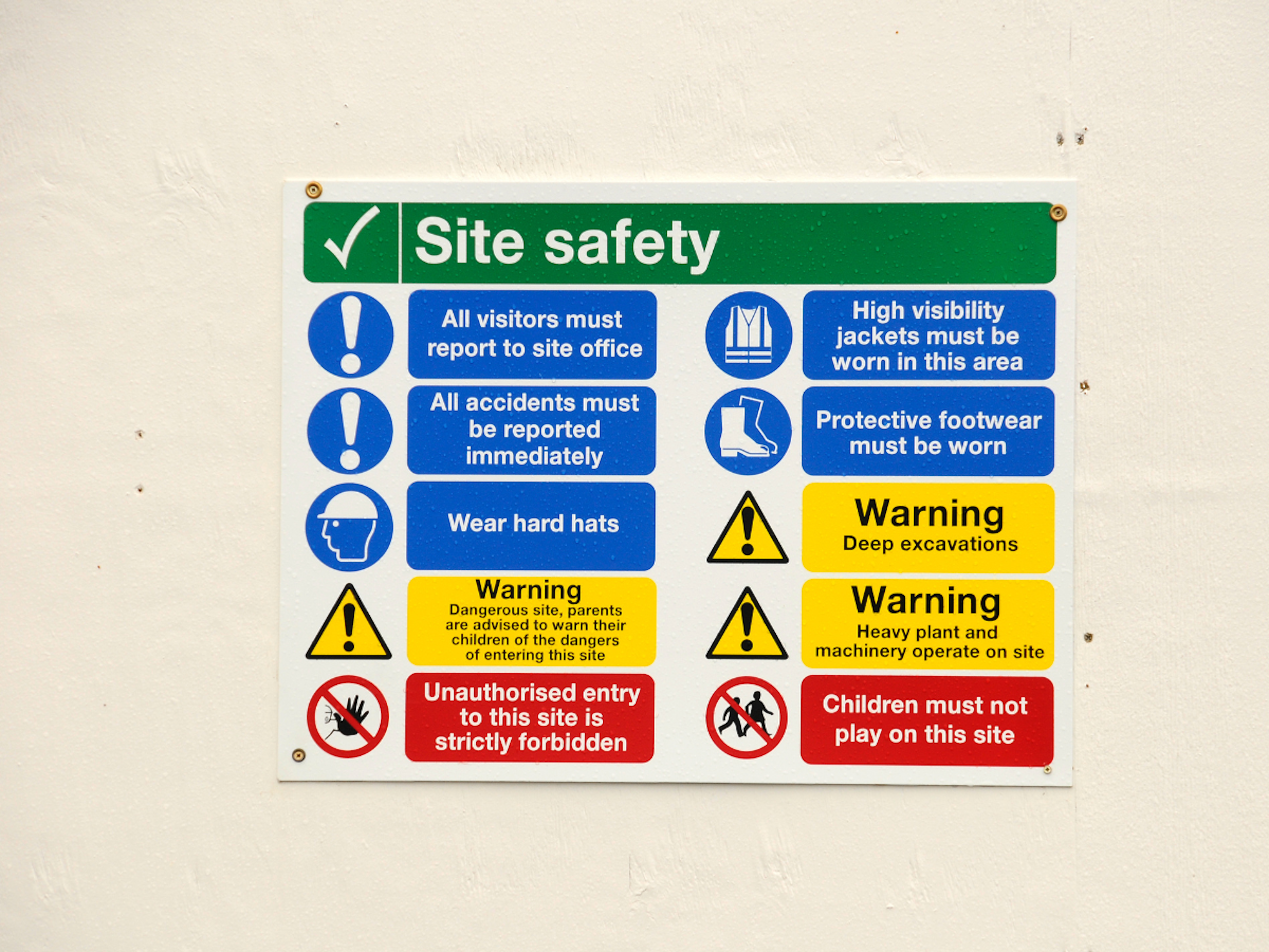Understanding Colour Codes in Safety Signs
In this blog, we'll delve into the world of safety sign colour codes, unravelling their significance.
Safety signs play a crucial role in communicating essential information and promoting a secure environment in various settings, from workplaces to public spaces.
One of the key elements that make safety signs effective is their use of colour codes. These colour codes are not arbitrary, they are designed to convey specific meanings and instructions.
In this blog, we'll delve into the world of safety sign colour codes, unravelling their significance.
The Meaning of Safety Signs Colours
Colours are powerful communicators, capable of conveying information quickly and effectively. In safety signage, colours are strategically chosen to evoke specific responses and convey messages. Understanding the meaning behind each colour is fundamental to interpreting safety signs accurately.
Red Safety Signs: Danger and Prohibition
Red is universally recognised as a colour of warning and danger. Safety signs featuring red are often used to indicate prohibited actions, fire-related hazards, or potential dangers that require immediate attention.
- Prohibition: Red safety signs are frequently used to indicate actions that are strictly prohibited. Examples include "No Entry," "No Smoking," and "Do Not Touch." The boldness of red grabs attention, signalling that immediate action or compliance is required.
- Danger: Safety signs using red often highlight hazardous areas, potential fire risks, or situations that demand immediate attention. Examples include "Fire Extinguisher," "High Voltage," and "Emergency Stop."

Yellow Safety Signs: Caution and Warning
Yellow signals caution and is commonly used to highlight potential hazards or indicate the need for attention.
Safety signs with yellow backgrounds often warn about slippery floors, electrical hazards, or the presence of machinery.
- Caution: Yellow is a colour that prompts caution without indicating an immediate threat. Signs with yellow backgrounds are commonly used to highlight potential hazards, such as "Caution: Wet Floor," "Caution: Moving Machinery," or "Caution: High Noise Levels."
- Warning: Yellow is also used in warning signs to draw attention to more serious hazards that may require immediate attention. Examples include "Warning: Electrical Hazard," "Warning: Biohazard," and "Warning: Hot Surface."

Blue Safety Signs: Information and Mandatory Instructions
Blue is associated with information and is frequently used to convey mandatory instructions. Safety signs featuring blue backgrounds typically provide information about specific actions or requirements.
- Information: Blue safety signs convey essential information that may not necessarily indicate a hazard. Examples include "Informational Signs" that provide directions, guidelines, or general information about a particular area or process.
- Mandatory Instructions: Blue is often used to indicate mandatory actions or requirements. Signs such as "Mandatory PPE," "Mandatory Handwashing," or "Mandatory Hearing Protection" use blue to signal that certain actions must be taken.

Green Safety Signs: Safety and Emergency Escape
Green is commonly associated with safety, indicating safe routes, emergency exits, and first aid facilities. Signs with green backgrounds are crucial for guiding individuals to safety during emergencies.
- Safety: Safety signs with green backgrounds guide individuals to safety-related resources and facilities. Examples include "Emergency Assembly Point," "First Aid," and "Safety Equipment."
- Emergency Escape: Green is commonly used for emergency exit signs, indicating safe evacuation routes. These signs are crucial for ensuring the safe exit of individuals during emergencies.

Orange Safety Signs: Warning and Temporary Hazards
Orange is often used to highlight temporary hazards or indicate the presence of construction or maintenance activities. Safety signs with orange backgrounds signal caution and awareness.
- Warning: Orange safety signs are used to warn about potential hazards, similar to yellow, but often with an emphasis on temporary or specific dangers. Examples include "Warning: Construction Zone," "Warning: High Voltage Equipment," and "Warning: Flammable Materials."
- Temporary Hazards: Orange is commonly employed to indicate temporary conditions, such as construction or maintenance activities. Signs like "Temporary Hazard" or "Work in Progress" use orange to caution individuals about potential dangers.

Purple Safety Signs: Specific Warnings and Radiation Hazards
Purple is a less common colour in safety signs but is used to convey specific warnings, particularly related to radiation hazards.Signs featuring purple backgrounds indicate areas or equipment where exposure to radiation may pose a risk.
- Specific Warnings: Purple safety signs are less common but serve specific purposes. They are often used to warn about unique or specific dangers. In the context of safety signs, purple is typically associated with radiation hazards. Examples include "Radiation Area" or "X-Ray in Use.

Safety Signs from the Experts, REGALTAGS
Understanding the nuanced meanings associated with each colour in safety signs is crucial for creating a safer environment and promoting effective communication in various settings. At REGALTAGS, we provide safety signs that meets all safety specifications and needs.
We believe every signage application is unique and that’s why all our signs are completely customisable so you can ensure they’ll be most effective for you. Our designers can guide you through with up-to-date knowledge of industry best practices and 1000’s of tried and tested existing signs for inspiration.
If you’d like to find out more about how we can help with your safety signs, contact our friendly team at REGALTAGS® today. We’re more than happy to answer any questions you have and can guide you through each material option.
Subscribe
Join 10,000+ others receiving our monthly updates. Free Tag knowledge delivered straight to your inbox.





